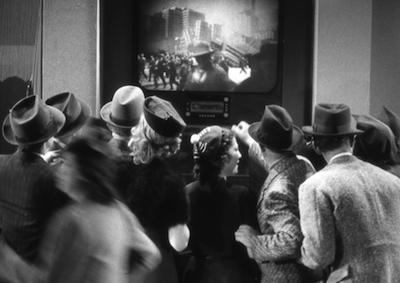The loathsome career of Henry Schireson, the self-styled “King of Quacks” famous for bobbing Fanny Brice's nose and infamous for the botched surgery that necessitated the amputation of Sadye Holland's gangrenous legs, is celebrated in Lowell Sherman's False Faces, a delirious film à clef worthy to be spoken of in the same breath with the best of Warren William's pre-Code muckrakers like Bedside (1934), Skyscraper Souls (1932) and The Mouthpiece (1932).
We first meet Schireson's screen counterpart, Dr. Silas Benton (portrayed by director Sherman as an affectless sociopath), extorting money from a poor immigrant family for deceitful medical guarantees. Dismissed from his post at a New York hospital, Benton relocates to Chicago and promotes himself to the idle rich and famous as the doyen of nip-and-tuck. Utterly indifferent to his trail of human wreckage, Benton dallies promiscuously with every woman in sight and gorges himself with riches gleaned from his outlaw surgeries. His ultimate comeuppance is designed to leave the picture audience agog and cheering.
False Faces provides showcases for a host of eclectic actresses, including Lila Lee (mother of A Chorus Line playwright James Kirkwood Jr.) as the left-behind lover; the tragically alcoholic Clara Bow wannabe, Peggy Shannon, as Benton's Chicago squeeze; and Nance O'Neil, confidant and purported lover of axe murderess Lizzie Borden as the wretched Mrs. Finn. They all face stiff competition from that ultimate paragon of studio logos, the anonymous but delightful World Wide Pictures girl. —Scott MacQueen
35mm, b/w, 81 min. Director: Lowell Sherman. Production: K.B.S. Productions. Distribution: World Wide Pictures, Inc. Produced by: E.W. Hammons. Screenwriters: Kubec Glasmon, Llewellyn Hughes. Cinematography: R. O. Binger, Ted McCord. Art Director: Ralph DeLacy. Cast: Lowell Sherman, Peggy Shannon, Lila Lee, Berton Churchill, David Landau.
Preserved from the incomplete 35mm nitrate camera negative, the incomplete 35mm nitrate soundtrack negative, a 35mm nitrate print and a 16mm print. Laboratory services by The Stanford Theatre Film Laboratory, Audio Mechanics, Simon Daniel Sound, DJ Audio, Inc. Special thanks to: Paul Adair, Jim Reid, David Stenn, The Academy Film Archive.






 Mobile Navigation
Mobile Navigation

